A Watt-Level Pulsed Er:Lu2O3 Laser Based on a TiB2 Saturable Absorber
Abstract
1. Introduction
2. The Electronic Property of TiB2 Nanoparticles
3. The Preparation, Morphology, and Optical Response of TiB2 Nanoparticles
4. Laser Experimental Setup
5. Results and Discussion
6. Conclusions
Author Contributions
Funding
Data Availability Statement
Conflicts of Interest
References
- Skorczakowski, M.; Swiderski, J.; Pichola, W.; Nyga, P.; Zajac, A.; Maciejewska, M.; Galecki, L.; Kasprzak, J.; Gross, S.; Heinrich, A. Mid-infrared Q-switched Er:YAG laser for medical applications. Laser Phys. Lett. 2010, 7, 498. [Google Scholar] [CrossRef]
- Vodopyanov, K. Mid-infrared optical parametric generator with extra-wide (3–19-µm) tunability: Applications for spectroscopy of two-dimensional electrons in quantum wells. J. Opt. Soc. Am. B 1999, 16, 1579–1586. [Google Scholar] [CrossRef]
- Bekman, H.H.P.T.; Heuvel, J.C.; van Putten, F.J.M.; Schleijpen, R. Development of a mid-infrared laser for the study of infrared countermeasures techniques. Technol. Opt. Countermeas. SPIE 2004, 5615, 27–38. [Google Scholar]
- Robinson, M.; Devor, D.P. Thermal switching of laser emission of Er3+ at 2.69 μm and Tm3+ at 1.86 μm in mixed crystals of CaF2:ErF3:TmF3. Appl. Phys. Lett. 1967, 10, 167–170. [Google Scholar] [CrossRef]
- Labbe, C.; Doualan, J.L.; Camy, P.; Moncorgé, R.; Thuau, M. The 2.8 μm laser properties of Er3+ doped CaF2 crystals. Opt. Commun. 2002, 209, 193–199. [Google Scholar] [CrossRef]
- Stoneman, R.C.; Lynn, J.G.; Esterowitz, L. Direct upper-state pumping of the 2.8 μm, Er3+:YLF laser. IEEE J. Quantum Electron. 1992, 28, 1041–1045. [Google Scholar] [CrossRef]
- Wyss, C.; Lüthy, W.; Weber, H.P.; Rogin, P.; Hulliger, J. Emission properties of an optimised 2.8 μm Er3+:YLF laser. Opt. Commun. 1997, 139, 215–218. [Google Scholar] [CrossRef]
- Pollnau, M.; Lüthy, W.; Weber, H.P.; Jensen, T.; Huber, G.; Cassanho, A.; Jenssen, H.P.; McFarlane, R.A. Investigation of diode-pumped 2.8-μm laser performance in Er:BaY2F8. Opt. Lett. 1996, 21, 48–50. [Google Scholar] [CrossRef]
- Kränkel, C. Rare-earth-doped sesquioxides for diode-pumped high-power lasers in the 1-, 2-, and 3-μm spectral range. IEEE J. Sel. Top. Quantum Electron. 2014, 21, 250–262. [Google Scholar] [CrossRef]
- Mackenzie, J.I. Planar waveguides, a power scaling architecture for low-gain quasi-four-level lasers. In Proceedings of the Advanced Solid-State Lasers Congress, Paris, France, 27 October–1 November 2013. [Google Scholar]
- Koopmann, P.; Lamrini, S.; Scholle, K.; Schäfer, M.; Fuhrberg, P.; Huber, G. Multi-watt laser operation and laser parameters of Ho-doped Lu2O3 at 2.12 μm. Opt. Mater. Express 2011, 1, 1447–1456. [Google Scholar] [CrossRef]
- Liang, Y.; Li, T.; Qiao, W.; Feng, T.; Zhao, S.; Zhao, Y.; Song, Y.; Kränkel, C. Mid-infrared Q-switch performance of ZrC. Photonics Res. 2020, 8, 1857–1861. [Google Scholar] [CrossRef]
- Su, C.; Liu, Y.; Feng, T.; Qiao, W.; Zhao, Y.; Liang, Y.; Li, T. Optical modulation of the MXene Ti3C2Tx saturable absorber for Er:Lu2O3 laser. Opt. Mater. 2021, 115, 110949. [Google Scholar] [CrossRef]
- Liang, Y.; Li, T.; Zhang, B.; He, J.; Kalusniak, S.; Zhao, X.; Kränkel, C. 14.1 W continuous-wave dual-end diode-pumped Er:Lu2O3 laser at 2.85 µm. Chin. Opt. Lett. 2024, 22, 011403. [Google Scholar] [CrossRef]
- Kumar, R.; Mishra, M.C.; Sharma, B.K.; Sharma, V.; Lowther, J.E.; Vyas, V.; Sharma, G. Electronic structure and elastic properties of TiB2 and ZrB2. Comput. Mater. Sci. 2012, 61, 150–157. [Google Scholar] [CrossRef]
- Zhang, L.Z.; Wang, Z.F.; Du, S.X.; Gao, H.J.; Liu, F. Prediction of a Dirac state in monolayer TiB2. Phys. Rev. B 2014, 90, 161402. [Google Scholar] [CrossRef]
- Yousaf, A.; Gilliam, M.S.; Chang, S.L.Y.; Augustin, M.; Guo, Y.; Tahir, F.; Wang, M.; Schwindt, A.; Chu, X.S.; Li, D.O.; et al. Exfoliation of Two-Dimensional Nanosheets of Metal Diborides. arXiv 2020, arXiv:2001.09237. [Google Scholar] [CrossRef]
- Wang, F.; Lan, D.; Qu, Y.; Zhang, X.; Cheng, T. TiB2 nanoparticles with a broadband nonlinear response for ultrafast pulse generation. J. Mater. Chem. C 2022, 10, 10943–10949. [Google Scholar] [CrossRef]
- Dawlaty, M.J.; Shivaraman, S.; Strait, J.; George, P.; Chandrashekhar, M.; Rana, F.; Spencer, G.M.; Veksler, D.; Chen, Y. Measurement of the optical absorption spectra of epitaxial graphene from terahertz to visible. Appl. Phys. Lett. 2008, 93, 131905. [Google Scholar] [CrossRef]
- Bača, Ľ.; Stelzer, N. Adapting of sol–gel process for preparation of TiB2 powder from low-cost precursors. J. Eur. Ceram. Soc. 2008, 28, 907–911. [Google Scholar] [CrossRef]
- Liu, K.; Feng, J.; Guo, J.; Chen, L.; Feng, Y.; Tang, Y.; Lu, H.; Yu, J.; Zhang, J.; Zhao, H.; et al. (1-10) Facet-Dominated TiB2 Nanosheets with High Exposure of Dual-Atom-Sites for Enhanced Polysulfide Conversion in Li-S Batteries. Adv. Funct. Mater. 2023, 2314657. [Google Scholar] [CrossRef]
- Li, T.; Beil, K.; Kränkel, C.; Brandt, C.; Huber, G. Laser performance of highly doped Er:Lu2O3 at 2.8 µm. In Advanced Solid-State Photonics; Optica Publishing Group: Washington, DC, USA, 2012. [Google Scholar]
- Uvarova, A.; Guguschev, C.; Kränkel, C. Growth and characterization of high-melting sesquioxides for 3 µm lasers. In Proceedings of the 2019 Conference on Lasers and Electro-Optics Europe and European Quantum Electronics Conference, Munich, Germany, 23–27 June 2019. [Google Scholar]
- Reichert, F.; Fechner, M.; Koopmann, P.; Brandt, C.; Petermann, K.; Huber, G. Spectroscopy and Laser Action of the Nd-Doped Mixed Sesquioxide Lu2−xScxO3. In Advances in Optical Materials; Optica Publishing Group: Washington, DC, USA, 2011. [Google Scholar]
- Fan, M.; Li, T.; Zhao, S.; Li, G.; Ma, H.; Gao, X.; Kränkel, C.; Huber, G. Watt-level passively Q-switched Er:Lu2O3 at 2.84 μm using MoS2. Opt. Lett. 2016, 41, 540–543. [Google Scholar] [CrossRef] [PubMed]
- Fan, M.; Li, T.; Zhao, S.; Li, G.; Gao, X.; Yang, K.; Li, D.; Kränkel, C. Multilayer black phosphorus as saturable absorber for an Er:Lu2O3 laser at ∼3 μm. Photonics Res. 2016, 4, 181–186. [Google Scholar] [CrossRef]
- Spühler, G.J.; Paschotta, R.; Fluck, R.; Braun, B.; Moser, M.; Zhang, G.; Gini, E.; Keller, U. Experimentally confirmed design guidelines for passively Q-switched microchip lasers using semiconductor saturable absorbers. J. Opt. Soc. Am. B 1999, 16, 376–388. [Google Scholar] [CrossRef]

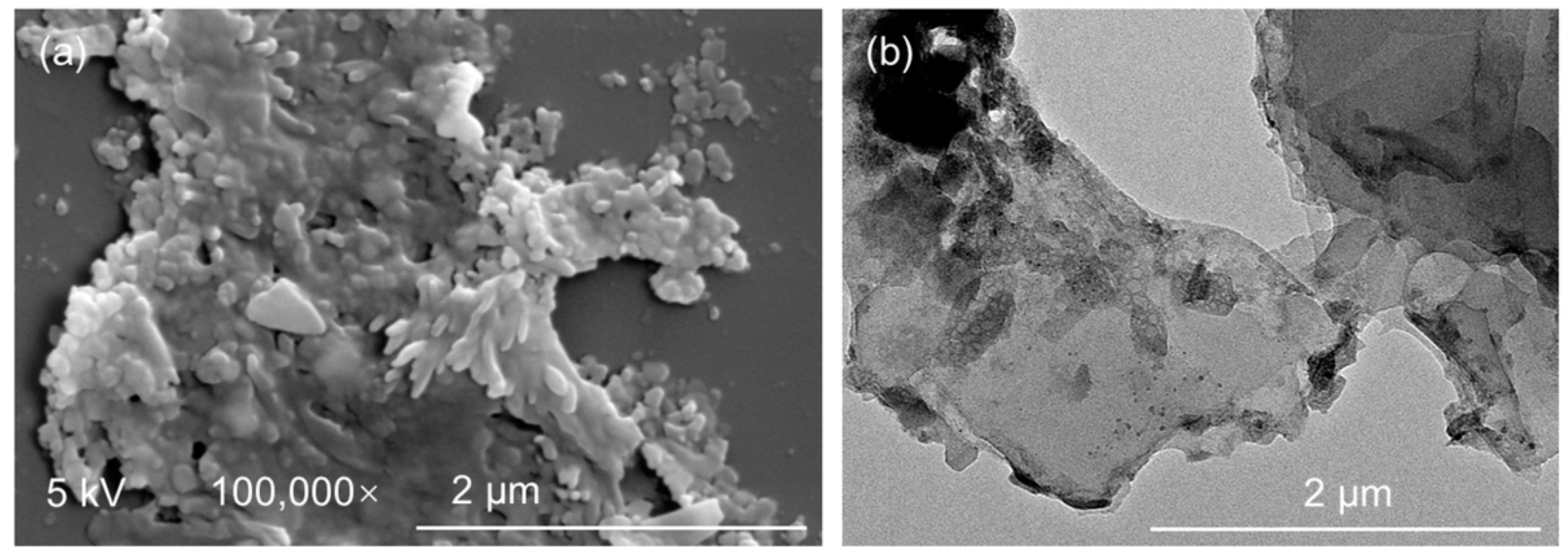
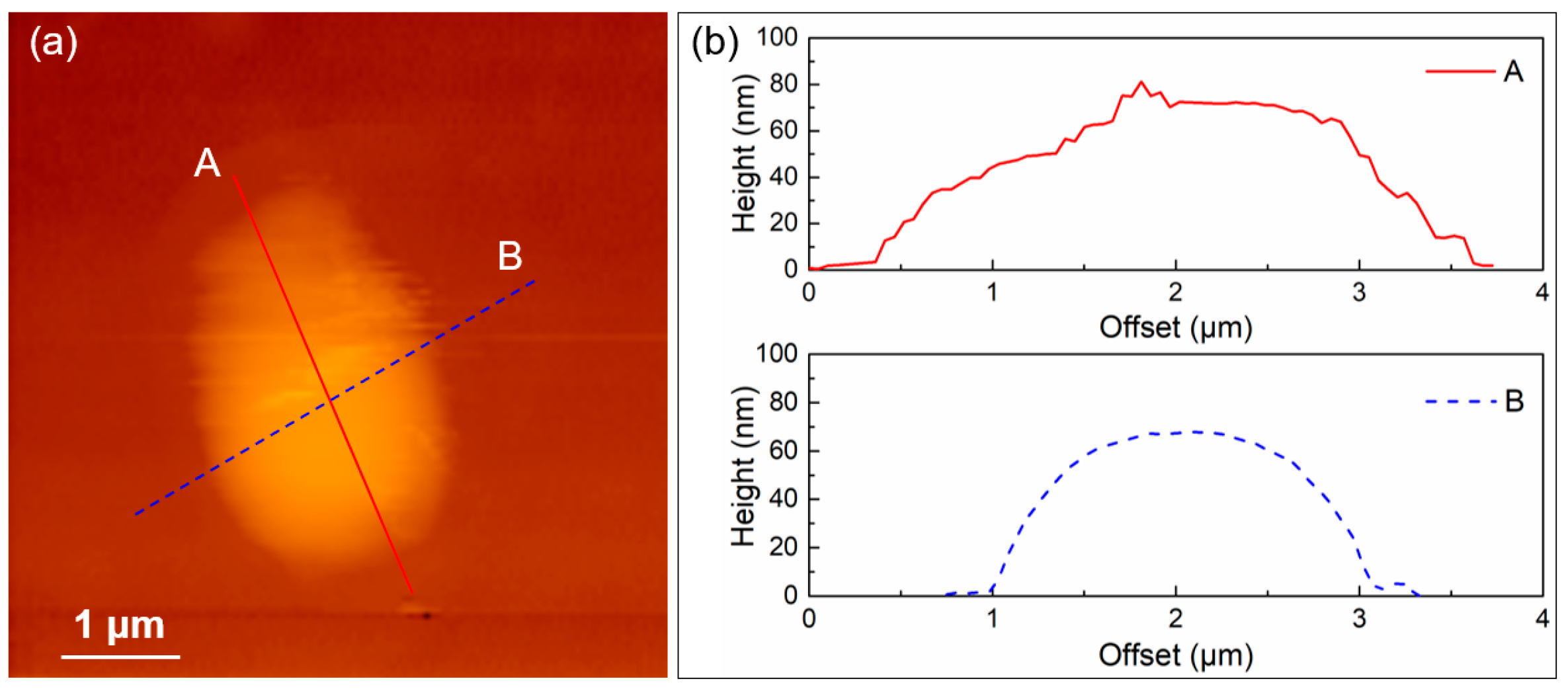


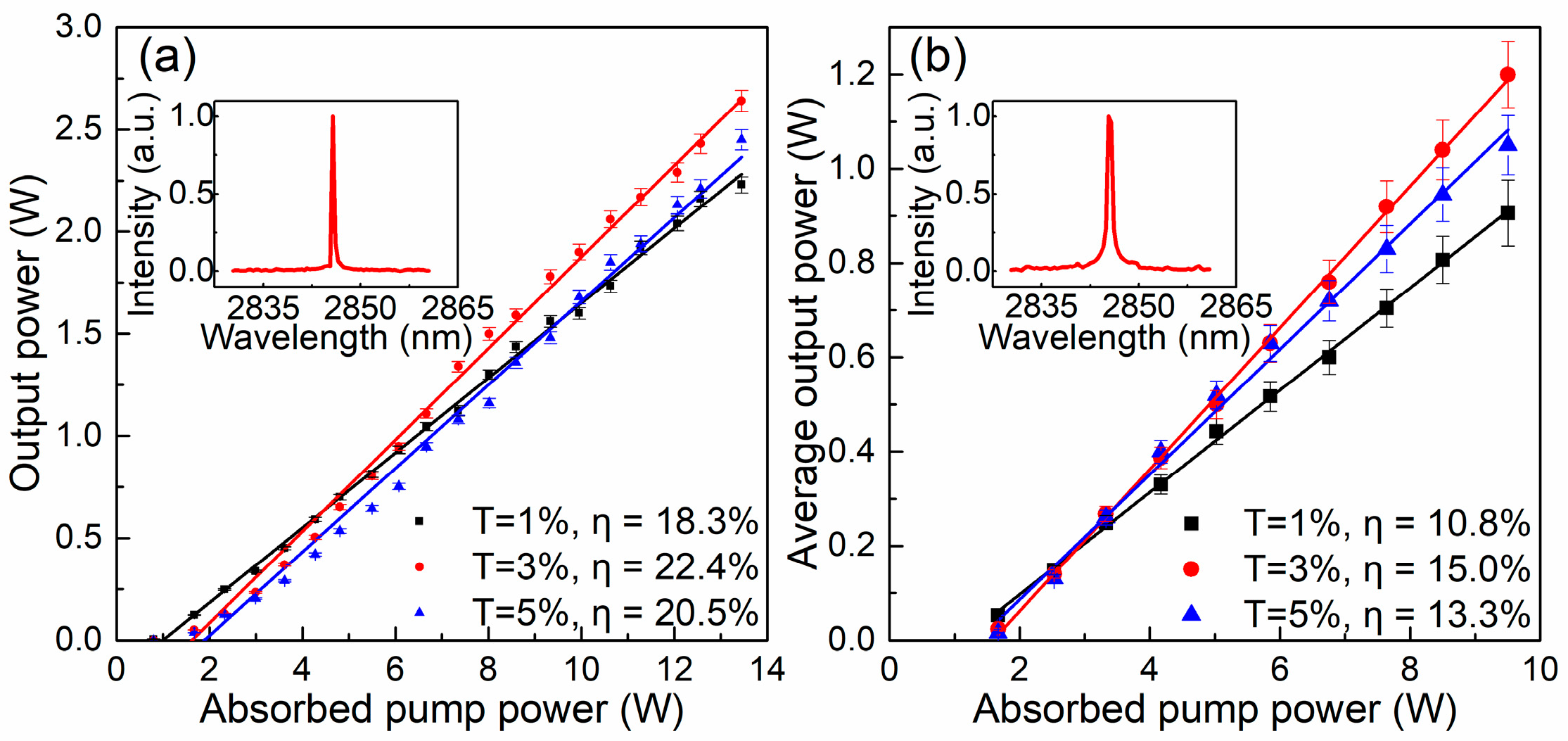
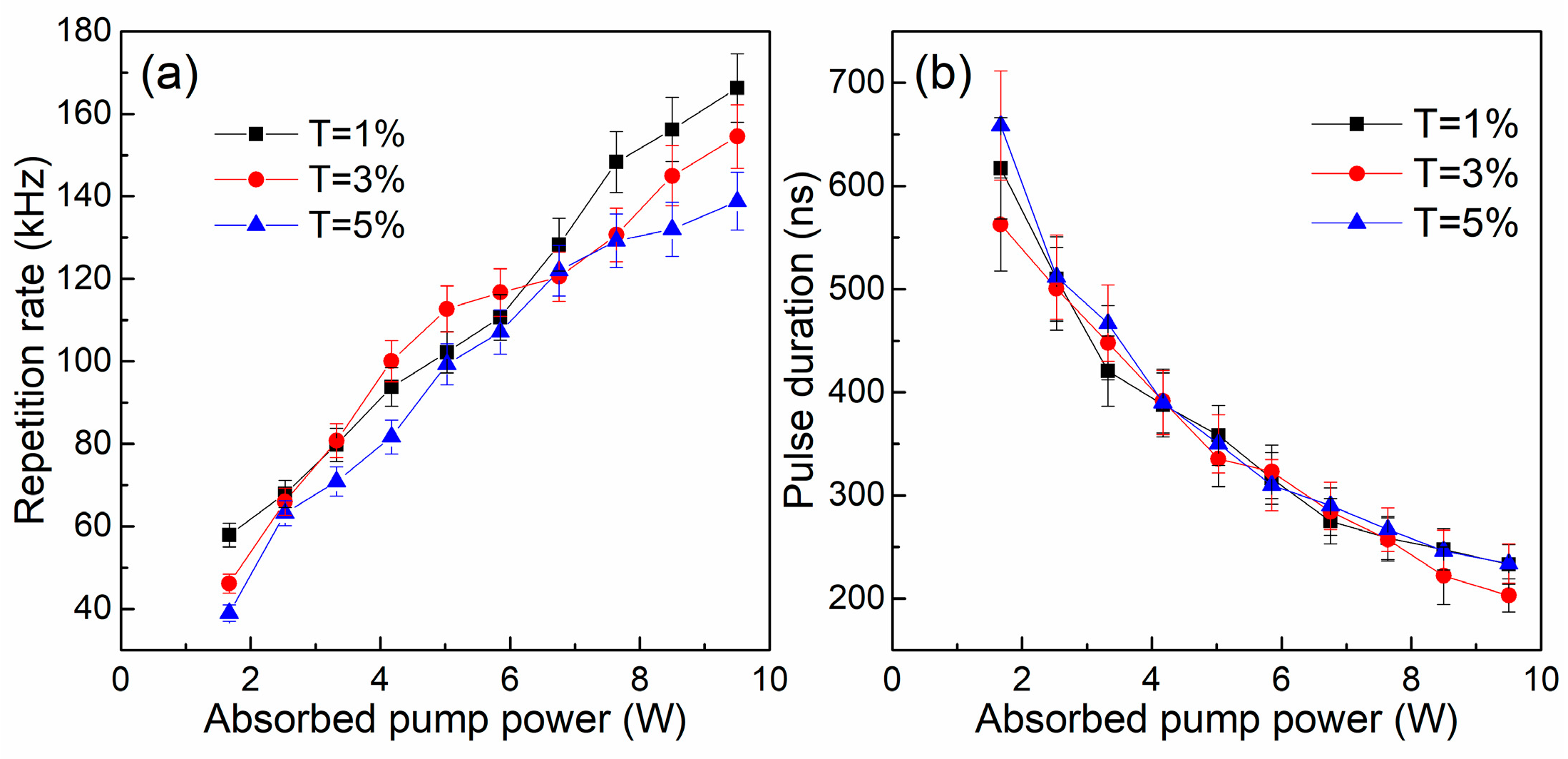

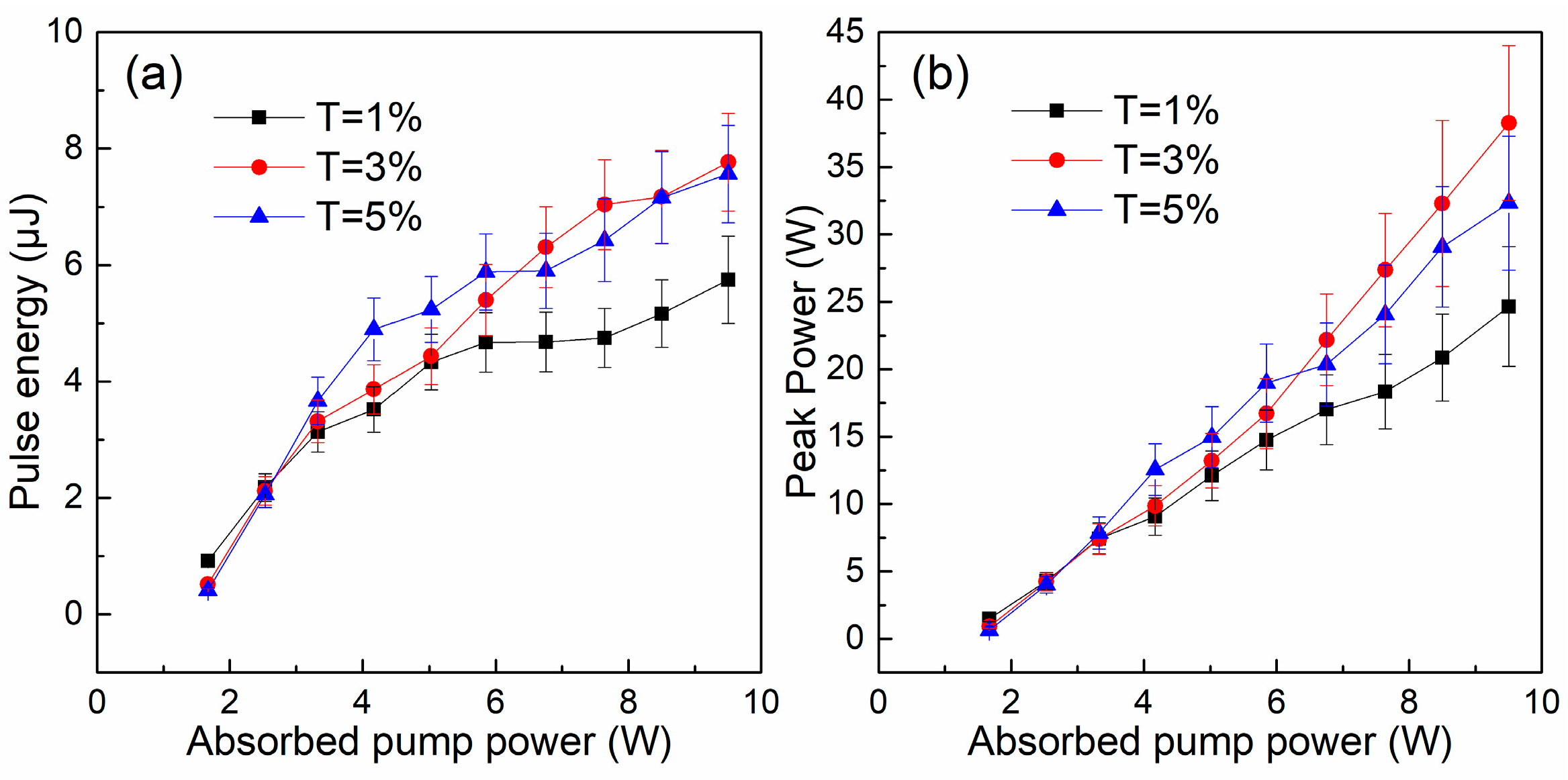
Disclaimer/Publisher’s Note: The statements, opinions and data contained in all publications are solely those of the individual author(s) and contributor(s) and not of MDPI and/or the editor(s). MDPI and/or the editor(s) disclaim responsibility for any injury to people or property resulting from any ideas, methods, instructions or products referred to in the content. |
© 2024 by the authors. Licensee MDPI, Basel, Switzerland. This article is an open access article distributed under the terms and conditions of the Creative Commons Attribution (CC BY) license (https://creativecommons.org/licenses/by/4.0/).
Share and Cite
Liang, Y.; Zhang, L. A Watt-Level Pulsed Er:Lu2O3 Laser Based on a TiB2 Saturable Absorber. Nanomaterials 2024, 14, 379. https://doi.org/10.3390/nano14040379
Liang Y, Zhang L. A Watt-Level Pulsed Er:Lu2O3 Laser Based on a TiB2 Saturable Absorber. Nanomaterials. 2024; 14(4):379. https://doi.org/10.3390/nano14040379
Chicago/Turabian StyleLiang, Yangyang, and Lu Zhang. 2024. "A Watt-Level Pulsed Er:Lu2O3 Laser Based on a TiB2 Saturable Absorber" Nanomaterials 14, no. 4: 379. https://doi.org/10.3390/nano14040379
APA StyleLiang, Y., & Zhang, L. (2024). A Watt-Level Pulsed Er:Lu2O3 Laser Based on a TiB2 Saturable Absorber. Nanomaterials, 14(4), 379. https://doi.org/10.3390/nano14040379





